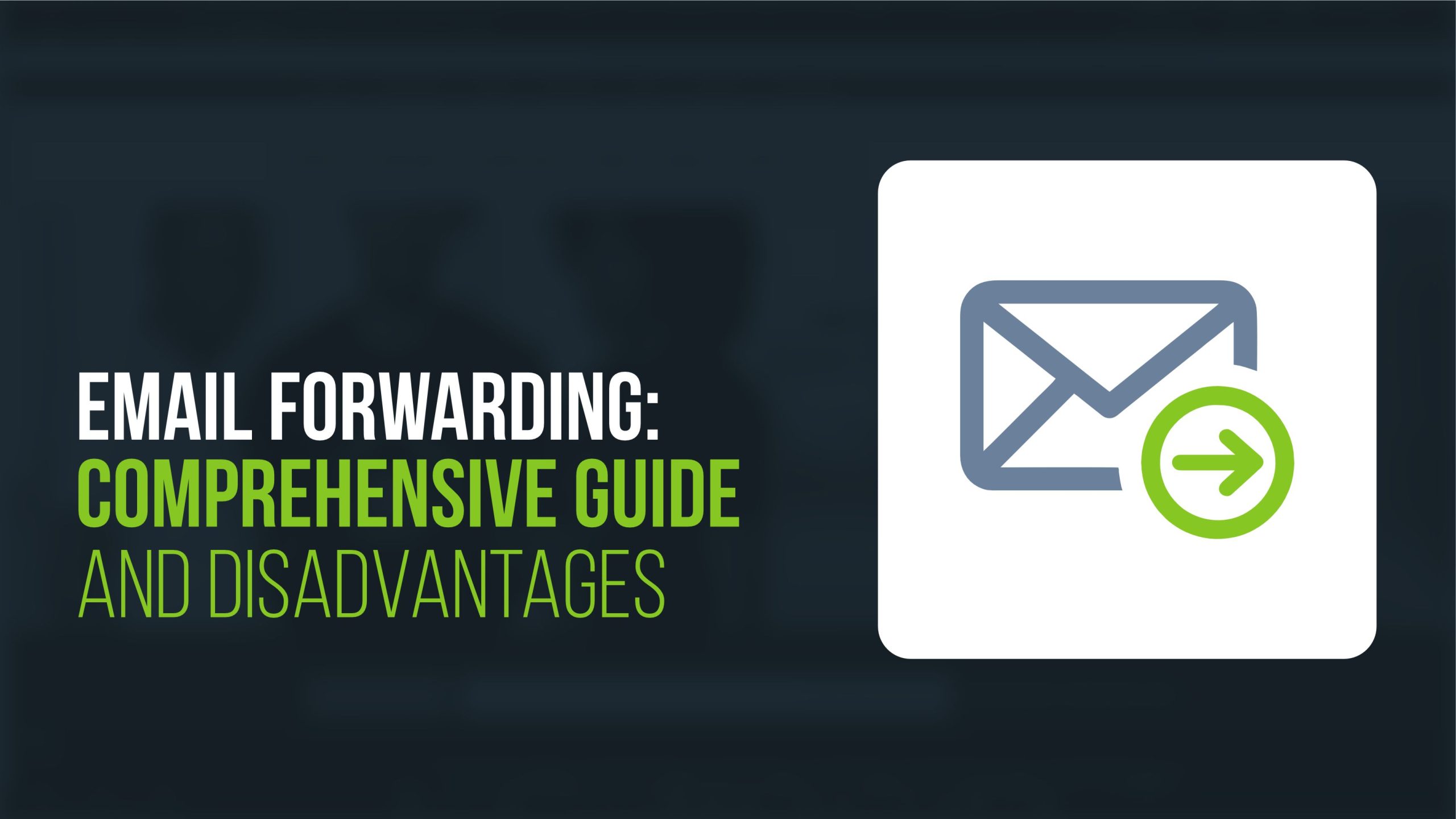
Email forwarding is a useful feature that allows you to automatically redirect incoming emails from one email address to another. This can be especially beneficial for individuals managing multiple email accounts, businesses consolidating emails, or users switching to new email addresses without losing important communications. However, while convenient, email forwarding also comes with certain disadvantages that users need to be aware of.
What is Email Forwarding?
Email forwarding is the process of automatically sending an email received at one address to another email address. This feature can be set up on most email clients and servers, enabling seamless redirection of messages without the need for manual intervention. This can be useful in a variety of scenarios, such as:
Consolidating multiple email accounts: If you have multiple email addresses (e.g., a work email, a personal email, and a project-specific email), you can forward all of them to a single inbox for better organization and management.
Maintaining email access when switching providers: If you are changing email providers, you can forward emails from your old account to your new account during the transition period.
Redirecting emails to a different device: You can forward emails to your mobile device or another computer, allowing you to access your messages on the go.
Handling email for a departing employee: When an employee leaves an organization, their emails can be forwarded to a manager or colleague to ensure continuity of communication.
Types of Email Forwarding
Manual Forwarding: Manually forwarding individual emails as needed.
Automatic Forwarding: Setting up rules to forward emails based on specific criteria or for all incoming emails.
Advantages of Email Forwarding
Centralized Management:
Consolidate multiple email accounts into one inbox, making it easier to manage emails.
Time-Saving:
Avoid the hassle of checking multiple email accounts separately.
Continuity:
Ensure you continue to receive important emails even if you change your primary email address.
Flexibility:
Forward emails to different addresses based on your needs (e.g., forwarding work emails to a personal account while on vacation).
Backup:
Create a backup of emails by forwarding them to another account, ensuring no data loss.
Disadvantages of Email Forwarding
While email forwarding offers many benefits, there are also several disadvantages that need to be considered:
Security Risks:
Forwarding emails to multiple addresses increases the risk of sensitive information being exposed. If the forwarding address is compromised, all forwarded emails are at risk.
Example: If an employee forwards work emails to a personal account and that account is hacked, sensitive business information could be exposed.
Spam Filtering Issues:
Forwarded emails might be marked as spam by the recipient’s email service, especially if the forwarding settings are not properly configured.
Example: Legitimate emails from your work account could end up in your personal account’s spam folder, causing you to miss important messages.
Loss of Original Sender Information:
Forwarding emails can sometimes strip away the original sender information, making it difficult to identify who initially sent the email.
Example: You may receive forwarded emails that appear to come from the forwarding account, not the original sender, leading to confusion.
Increased Email Volume:
Forwarding can lead to a high volume of emails in the destination inbox, making it challenging to manage and organize messages effectively.
Example: If you forward all emails from multiple accounts to one inbox, you might be overwhelmed by the sheer number of emails.
Delayed Delivery:
Mismanagement:
If not properly managed, forwarded emails can lead to cluttered inboxes, making it difficult to track and organize important messages.
Example: Important emails can get buried under less important forwarded emails, causing delays in response times.
Alternatives to Email Forwarding
If you are faced with the drawbacks of email forwarding, there are alternative solutions you can consider:
Email Aliases: Many email providers offer the ability to create email aliases, which allow you to have multiple email addresses that all point to the same inbox. This can provide a similar consolidation benefit without the added complexity of email forwarding.
Email Delegation: Some email platforms allow you to grant others access to your inbox, enabling them to view, send, and manage your emails without the need for forwarding.
Email Archiving: Implementing a robust email archiving solution can help you retain and access important messages, even if you’re no longer using the original email account.
Email Filtering and Sorting: Setting up advanced email filters and rules can help you organize and prioritize your emails without relying on forward.
When considering email forwarding, it’s important to weigh the potential benefits against the potential risks and drawbacks, and choose the solution that best fits your organization’s needs and security requirements.
Email forwarding is a valuable tool for managing multiple email accounts, ensuring continuity, and consolidating communications. However, it is essential to understand the potential disadvantages, such as security risks, spam filtering issues, and mismanagement of emails. By following best practices and being mindful of these challenges, you can effectively use email forwarding to enhance your email management while minimizing potential downsides.
